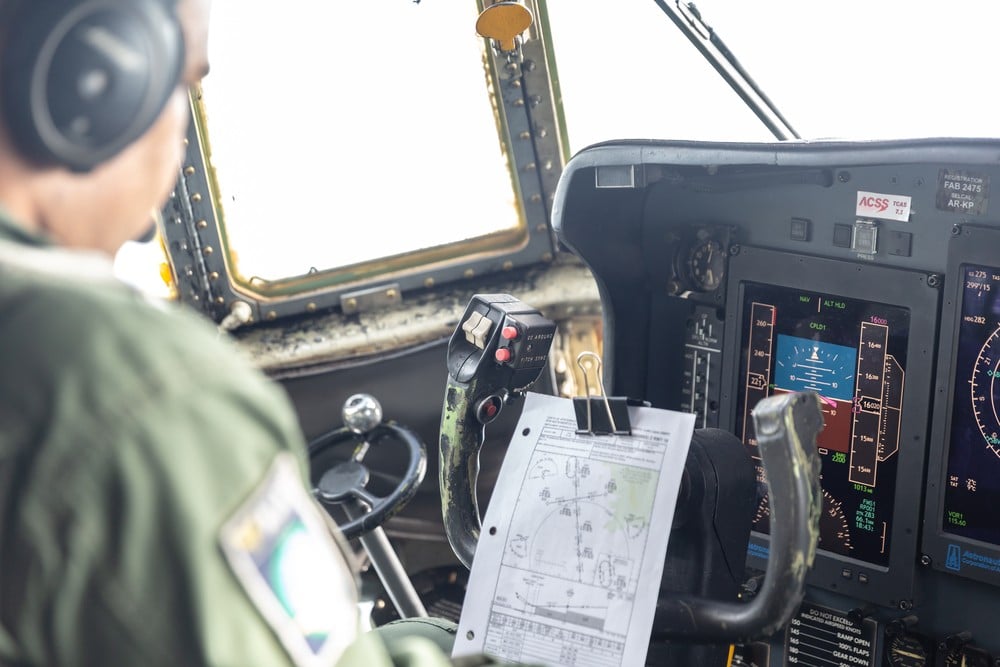Avionics testing forms the backbone of ensuring flight safety and system reliability. This process involves rigorous evaluations to verify that avionics equipment functions correctly under various conditions. It’s not just about finding flaws; it’s about guaranteeing that every component can withstand real-world challenges, ensuring aircraft operate smoothly and securely.
Sital Technology goes deep into the world of ARINC-429, bringing forth a suite of technologies that become the lifeline of avionics testing. Our Airborne Interface Cards and high reliability components leverage this protocol, making it simpler to simulate, analyze, and test avionics systems with unparalleled precision. This not only reduces the turnaround time for testing but also significantly enhances the dependability of avionics equipment.
The Crucial Role of Simulation in Avionics System Testing
Simulation plays a fundamental role in avionics system testing by offering a safe and controlled environment to conduct tests that might be too risky or expensive to perform in real life. Through simulation, testers can recreate specific scenarios or conditions that an aircraft might encounter during its operations. This allows them to observe how the avionic systems perform under stress or failure without putting any actual aircraft at risk.
Such simulations also provide the opportunity to test systems at the limits of their operational parameters. By doing so, manufacturers can identify any potential weaknesses or failure points in a controlled setting, where they can make adjustments without real-world consequences. Apart from safety, simulation helps in cutting down the cost and time involved in testing, making it a preferred approach in the initial stages of avionics system verification.
Procedures and Process Involved in Avionics System Testing
The procedures and process involved in avionics system testing are meticulous and structured to cover all bases. This testing begins with individual components, ensuring each meets specific technical standards. It then progresses to integrated system testing, where the interaction between different avionic components is examined. This step is vital to ensure that all parts of the avionic system communicate and function together as intended.
Testers employ various tools and technologies during these procedures, from software that simulates flight conditions to hardware that replicates aircraft inputs and outputs. This thorough testing process is vital to detect any errors or issues that might impede the avionic systems’ performance or reliability. By identifying and addressing these issues early, companies can avoid costly downtime or, more importantly, prevent potential safety hazards.
Importance of Regulatory Compliance in Avionics System Testing
Regulatory compliance emerges as a cornerstone in avionics system testing, embodying a set of standards and requirements set by aviation authorities. These regulations ensure that avionic systems adhere to the highest safety and performance standards, protecting passengers and crew alike. Companies must navigate through these regulatory waters carefully, as non-compliance can lead to severe repercussions, including fines, grounding of aircraft, or in worst-case scenarios, revocation of operating licenses.
Remaining compliant involves staying updated with any changes or updates in the aviation regulations and incorporating these into the testing process. This ensures that the avionic systems not only meet the current industry standards but are also prepared for future advancements or regulatory adjustments. Thus, regulatory compliance is not just about adhering to requirements; it’s also about ensuring a commitment to safety and quality in the aviation industry.
Challenges and Solutions in Modern Avionics System Testing
Testing modern avionics systems presents unique challenges. The increasing complexity of these systems, integrated with advanced software and hardware, demands rigorous and more sophisticated testing methods. One of the main hurdles is the need to test these systems in a range of environmental conditions they’ll encounter in actual operation, which may be difficult to replicate reliably on the ground.
Solutions to these testing challenges are as innovative as the systems themselves. Advanced simulation tools are being developed to better imitate a wide array of flight conditions. Another approach involves modular testing; breaking down the system into smaller, more manageable units for individual assessment before integrating and testing them as a whole.
Safety Measures and Precautions in Avionics System Testing
Safety is the bedrock of avionics system testing. Industry professionals continually update safety measures and precautions to mitigate risks. One key approach is redundancy; incorporating multiple fail-safes within the system to ensure that if one component fails, others can take over to maintain operations until the issue is rectified.
Testing teams place great emphasis on minimizing hazards. This includes routine checks of test equipment, adherence to safety protocols, and training teams to handle emergency scenarios. Precautionary measures, like using inert equipment that simulates operational load without the risk, are becoming standard practice.
Strict guidelines and checkpoints are established to ensure that each phase of the testing process is completed with adherence to safety standards. These guidelines help in systematically identifying and resolving any potential risks before they escalate into significant problems. By doing so, the focus on safety remains unyielded throughout the testing process.
Impact of Avionics System Testing on Aircraft Performance
Avionics system testing has a direct and significant impact on aircraft performance. By meticulously examining every component and system, testing ensures that each part operates at its peak, which in turn, optimizes the overall performance of the aircraft. This level of performance is not just about speed or fuel efficiency; it encompasses reliability, safety, and passenger comfort.
The feedback from system testing often leads to design enhancements. These changes are aimed at minimizing resistance, improving navigation accuracy, and enhancing communication fidelity. The ultimate goal is an aircraft that operates smoothly, offering a better experience for both the crew and passengers.
Equip Your Testing Arsenal with Avionics Testing Equipment
Stepping beyond protocols to the world of physical testing, our avionics testing equipment emerges as a crucial ally. From comprehensive testers to bespoke IP cores tailored for MIL-STD-1553, EBR-1553, and beyond, our equipment is built to tackle the complexities of modern avionics systems. Whether it’s aerospace, automotive, or space-grade applications, our solutions ensure that your systems meet the highest standards of reliability and safety.
Our cutting-edge avionics testing solutions are designed not just to meet but to exceed industry standards. Reach out today and elevate your avionics systems to the zenith of efficiency and reliability.



